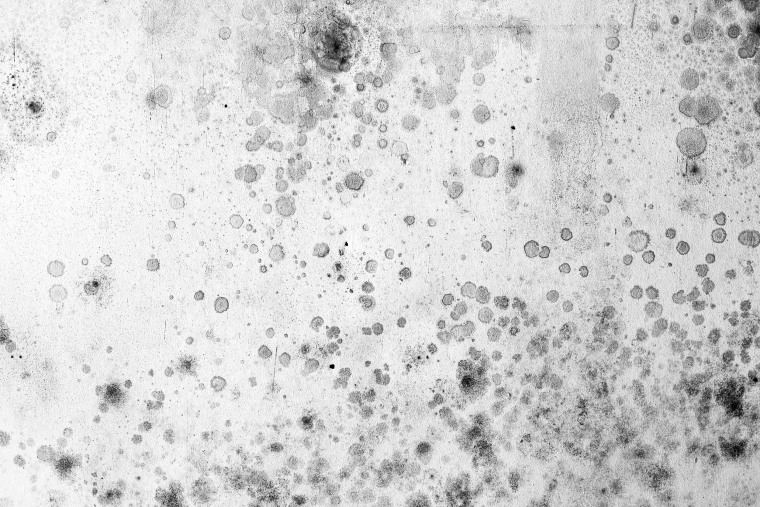Stepping into the shower, there's a brownish, greenish blob of slime in the corner. Or maybe there are red and orange streaks. Are they something to worry about? Is there any way to banish unsightly mold and mildew from the bathroom forever?
“Mold was here before we were on the planet, it'll be here after us,” Dr. Sophia Tolliver, a family medicine physician at Ohio State Wexner Medical Center in Columbus, told TODAY. “Definitely, the bathroom is a ground zero, if you will, for mold growth, probably because mold likes to grow in dark, damp areas.”

Is there a difference between mildew and mold?
Water runs frequently in bathrooms, making it moist and humid, an environment that allows mold to thrive. When people don’t clean the surfaces or dry them off, mildew begins to form. If it isn’t removed, it develops into mold.
“Mildew it the beginning of a mold colony,” Dr. Neeta Ogden, a spokesperson for the Asthma and Allergy Foundation of America, told TODAY.
Stagnant water in showers spurs mold growth, which is why so many people struggle to keep them free of mold and mildew. Plus, mold loves lurking in nooks between tile or deep in corners. Sometimes, hidden pipes under the sink or in the walls also have slow leaks that cause water to pool, making perfect hiding places for new colonies.
“It has to do with the nature of the bathrooms, where we take showers and baths and wash up," Ogden said. "Water is constantly being turned on and off ... It’s a perfect ground for mold to grow.”
Molds that commonly grow in bathrooms include:
- Aspergillus
- Cladosporium
- Penicillium
- Stachybotrys, also known as black mold
These varieties of mold mostly look dark brown or green with Stachybotrys — the most dangerous kind common to bathrooms — appearing so dark that it's almost black and Penicillium sometimes having a blue, green or yellowish tint to it.
"It can be difficult to tell different types of mold from another," Tolliver said. "They can look very similar."
While black mold "is less common than other mold species, it is not rare," according to the Centers for Disease Control and Prevention.
The agency does not recommend testing mold, but said, "all molds should be treated the same with respect to potential health risks and removal."
Can bathroom mold cause illness?
For the most part, mold just looks bad. For some, it can irritate allergies and asthma.
“Mold is relatively harmless, but given the right circumstances it can definitely cause some irritation,” Tolliver said. “If you have pre-existing allergies or COPD or some sort of respiratory condition, the spores can actually irritate the lining of your lungs and can increase your risk of asthma attacks or COPD exacerbation.”
People who are affected by bathroom mold will most likely experience runny noses, coughing and scratchy throats.
Ogden noted that people with allergies should be tested for which specific allergens bother them so they can best protect themselves. Mold is one of the irritants that can be identified through allergy tests.
“Doctors can and should identify what the culprit is,” she said.
Over-the-counter treatments can frequently ease the feeling associated with an allergy attack, but more severe cases could require a doctor’s intervention.
Minor adjustments can keep mildew and mold in check to prevent potential allergies.
How to clean mildew and mold
Cleansers with bleach, or even white vinegar, can often keep the slimy, hairy growths from taking root in the bathroom. Wearing gloves and a mask can protect people from inhaling any mold spores as they scour the bathroom surfaces.
These are some expert-approved steps to stop mold from colonizing the bathroom in the first place:
- Use a humidifier to make sure humidity is no more than 50%
- Make sure exhaust fans work
- Clean often with mold-killing products
- Check pipes to make sure they’re not leaking
- Change air filters regularly
Black mold, stachybotrys, can cause more serious reactions. Tolliver said that if people suspect the bathroom has this black mold, they should talk to a professional about removing it.
“It's very important that if you see this type of mold — which is usually dark green or black in color and, really, texture-wise it's kind of slimy — that you avoid the area because if that starts to break off, the mold spores can be very harmful,” he said. “It's probably a better idea to get a professional to come in and clean it.”
Follow TODAY Health and Wellness on Facebook and subscribe to our newsletter "One Small Thing" for easy tips to improve your life every weekday.